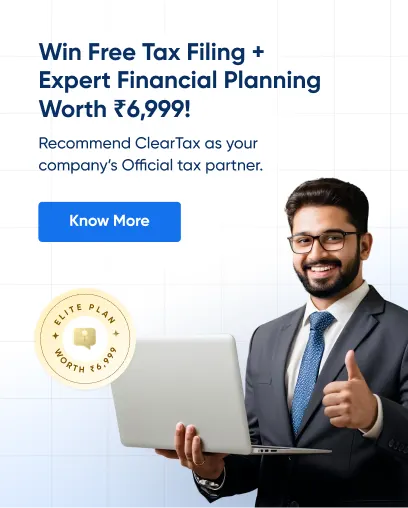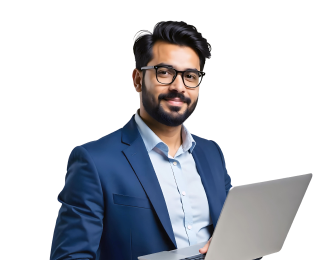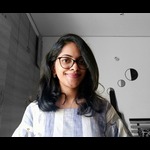139(9) – How to Respond to a Defective Return Notice?
A defective return occurs when the Income Tax Department finds errors or inconsistencies in a filed income tax return. It acts as a warning to taxpayers, allowing them to correct mistakes and ensure accurate reporting. Responding to such a notice helps avoid penalties, interest, or issues with refunds, while maintaining compliance with tax regulations.
Key Highlights
- A defective return is flagged when the Income Tax Department finds errors in your ITR.
- Common causes include incomplete ITR, TDS mismatch, unreported income, or incorrect details.
- Taxpayers have 15 days to respond to the notice.
What is a Defective Return?
A defective return occurs when the Income Tax Department detects errors or inconsistencies in your Income Tax Return (ITR). These errors could include:
- Missing or incomplete information in the ITR.
- Conflicting details compared to data available with the department (from employers, banks, mutual funds, TDS/TCS deductors, etc.).
- Incorrect basic details, such as name, PAN, or address.
- Mistakes in tax calculation or reporting of income and deductions.
What is Section 139(9) of the Income Tax Act?
Under Section 139(9) of the Income Tax Act, 1961, the department issues a notice for a return that is defective. This notice is sent to your registered email ID and is also available on the Income Tax e-filing portal. The purpose is to give you a chance to correct these mistakes and ensure that your ITR reflects accurate and complete information.
What is Defective Notice u/s 139(9) of the Income Tax Act?
- IT Department will issue the notice u/s 139(9) to your email ID registered with the income tax department. The subject of the email will be 'Communication under section 139(9) for PAN AWZXXXXXXX for the Assessment Year 2025-26'.
- The defective return notice is attached in the email and password protected.
- The password to open defective return notice u/s 139(9) is PAN in lowercase followed by date of birth in DDMMYYYY format.
Example: if your PAN is MNOPQ1212C and your date of birth is 12/10/1987, the password would be: mnopq1212c12101987
Why Is a Defective Notice Issued under Section 139(9)?
A defective return notice helps the department maintain data accuracy and ensures that taxpayers pay the correct amount of tax. It acts as a warning mechanism rather than a penalty notice, allowing you to rectify mistakes without facing adverse consequences.
How to Respond to a Defective Return Notice under Section 139(9)?
If the Assessing Officer considers the return to be defective, then a notice will be sent to the taxpayer. The taxpayer will have 15 days time to respond to the notice.
- Revise your return addressing the defects pointed out by the Income Tax Department within 15 days.
- If you are unable to complete these revisions within the given timeframe, you have the option to seek an extension.
Consequences of Ignoring Defective Notice u/s 139(9)
If the defective notice is not responded within the 15 day time limit, the return already filed would be treated as invalid. This results oin consequences of non-filing of returns like late filing penalty, delay in processing refund, and denial of carry-forward of losses.
Situations in which Defective Return Notice will be Issued
The Assessing Officer may consider the below-mentioned reasons, errors or omissions while issuing a defective return notice under section 139(9):
1. Incomplete Income Tax Return (ITR): If the ITR lacks necessary details in its annexures, statements, or mandatory columns, such as income from all sources is not mentioned, etc.
2. Missing Tax Information: If taxes have been paid but their details are omitted in the ITR, including information about TDS, TCS, advance tax, or self-assessment tax.
3. TDS and Income Mismatch: TDS is claimed. but corresponding income is not offered for tax in the ITR.
Example: If you have earned interest income from term deposits and tax has been deducted by the bank, both interest income and tax deducted should be reported in the ITR.
4. Income Tax Audit Concerns: If an audit is required to be done under section 44AB, the complete audit report, including profit and loss account, Balance sheet and auditors report, should be submitted. In the absence of these documents or submission of an incomplete audit report, you may invite a defective return notice.
5. Presumptive Taxation Inaccuracies: In cases of presumptive taxation, providing inaccurate computation of presumptive income, non-disclosure of relevant details, or mismatched gross receipts can trigger a defective return notice.
6. Tax Payment Discrepancies: If taxes are partially paid or the paid amount doesn't align with the tax liability in the ITR, a defective return notice may be issued.
7. Incorrect details in ITR: Filing an ITR with incorrect details regarding turnover, income limits, or inappropriate reporting for a specific head of income can lead to a defective return notice.
8. Mismatch in the name: When the name mentioned in the ITR does not match the name on the PAN card.
How to Revise your Income Tax Return in Response to the Notice?
Step 1: Check the reason for defective notice.
An income tax return (ITR) may be marked defective for various reasons. Some of the possible reasons are explained below:
- Incomplete Income Tax Return (ITR) - An ITR is deemed incomplete if it is filed without the requisite details in its annexures, statements, or mandatory sections, such as failing to report income from all sources.
- Missing Tax Information: Prior to filing the return, the tax and any applicable interest are not paid, and all relevant information is left blank or incorrect details are filled. For instance, the challan serial number, date of challan, and BSR code should all be correctly filled in.
- Mismatch in Information: The total amount of taxes paid is either not paid in full or is less than the amount payable on the income tax return.
- Mismatch between Form 26AS/AIS and ITR filed: Say you have received a defective notice because there is a mismatch between Form 26AS and your ITR. Download Form 26AS from the IT portal and check if you have earned any income on which tax has been deducted, for e.g.:
- interest income from term deposits;
- dividend income or
- any other income
- TDS is claimed but corresponding income not reported: Ideally, you should have reported both your income and the tax deducted in your ITR. However, if you claim only TDS but miss out on reporting the income, you may receive a defective notice.
Step 2: Once you identify the reason, log in to ClearTax and revise your return
Steps on how to respond to defective notice u/s 139(9) on Cleartax:
- Log in to ClearTax with your credentials.
- On the top right corner >> Click on ‘My Account’ >> Select ‘My Tax Returns’ from the dropdown menu as shown below.
- Click on ‘View details’, scroll further down, and click on ‘Mark your ITR as Revised’.
- Add the income details you missed disclosing in your original ITR and rectify the defect. Make sure you are correctly addressing the error due to which the return was considered defective.
- After making the necessary changes, kindly check if any tax is payable. If yes, then make the payment and update the challan details. (Refer to this guide)
- Once done, go to ‘My Accounts’ section again >> click on ‘Prepare Rectification JSON u/s139(9)’.
- Click on ‘My tax return is final and ready for filing under section 139(9)’. Enter CPC Notice number and date of notice from the email you received from the department and click on download JSON.
You will have to upload this JSON file on the income tax portal. The steps are listed below.
Step 3: Steps on how to respond to defective notice u/s 139(9) on income tax portal
- Log in on the e-filing website with your user ID (PAN/Aadhaar number) and password.
- Click on ‘Pending Actions’ and then select ‘E-proceedings’.
- Click on the ‘View Notices’. Here, you can view the notice and submit your response. After reading the notice, click on ‘Submit Response’.
- You can see the error description to understand the defect and its probable resolution is also mentioned alongside.
If you agree with the error details, select the ‘Agree’ option and ‘Offline utility’ as the mode of response. - Complete the ITR filing by uploading the JSON file that you downloaded from Cleartax.
- If you disagree with the defect, you can proceed by selecting the ‘Disagree’ option. You will also have to give reasons for disagreement in the text box provided.
- Check the box ‘Response cannot be modified after submission’ and then click on ‘Submit‘.
- Now click on the ‘Proceed to e-verify‘ button to e-verify your response for defective notice u/s 139(9). You can e-verify by any of the methods.
- You will see a confirmation message with an acknowledgement number on the screen upon successful uploading.
Frequently Asked Questions



